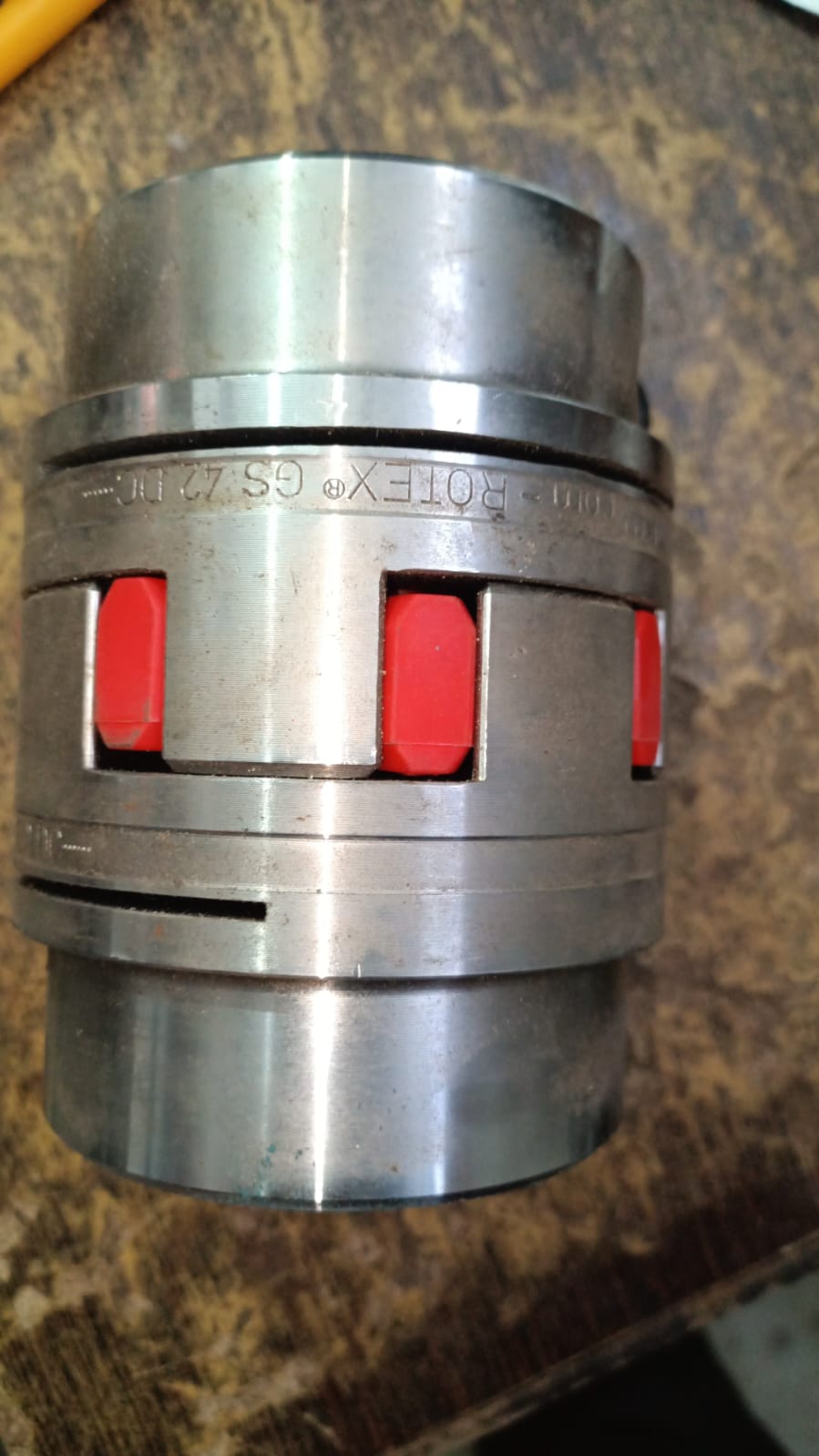
2024-12-20T07:41:07
Rotex Coupling A Rotex coupling is a type of flexible coupling used to connect two shafts in mechanical power transmission systems. It is designed to transmit torque while compensating for misalignments between the shafts, such as angular, radial, or axial misalignment. The main components of a Rotex coupling are: 1. Hub: The part that connects to the shaft. It is usually made from steel or other durable materials and is typically keyed or clamped to the shaft. 2. Jaw: This part connects the hub and the shaft, helping to transmit torque and handle misalignment. 3. Elastic Element (or insert): The flexible element in the middle of the coupling, often made from a polymer or elastomeric material. This component absorbs vibrations, dampens shock loads, and compensates for misalignment. Key Features of Rotex Couplings: • Flexibility: The coupling can accommodate misalignments in three directions (angular, radial, and axial). • High Torque Transmission: It allows for efficient torque transfer between connected shafts. • Damping: The elastic insert helps reduce vibrations and shock loads, providing smoother operation. • Compact Design: Rotex couplings are often compact, making them ideal for limited space applications. Applications: • Industrial Machinery: Rotex couplings are widely used in applications like conveyors, pumps, compressors, fans, and machine tools. • Automotive and Robotics: Used to connect motors to drive shafts in robotic systems and vehicles. • Power Plants: In rotating equipment like turbines and generators, where precise alignment is crucial. Advantages: • Reduces wear and tear due to misalignment. • Damping reduces noise and vibration. • Can be customized for different torque and misalignment needs. • Easy installation and maintenance due to its modular design. Rotex couplings are often chosen for their durability and versatility in various mechanical drive systems.

Have a question? Ask here!
Required fields are marked *